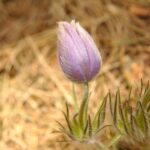Are you looking for creative ideas for hosta gardens? Hostas are beloved for their beautiful foliage and low maintenance requirements, making them a popular choice for gardeners of all levels.
In this article, we will explore the world of hosta gardening, from understanding different varieties to designing and maintaining a stunning hosta garden. Whether you’re a seasoned hosta enthusiast or just getting started, these tips and ideas will inspire you to create a breathtaking hosta garden in your own outdoor space.
Hostas, also known as plantain lilies, are shade-loving perennial plants that come in a wide range of sizes, colors, and textures. Understanding the different varieties of hostas is essential for creating a diverse and visually appealing garden. We will discuss the various types of hostas available and how to choose the right ones for your specific gardening needs.
Designing your hosta garden is an exciting opportunity to showcase your creativity and personal style. With tips and tricks for arranging hostas, choosing companion plants, and troubleshooting common issues, you’ll be well-equipped to create a stunning focal point in your outdoor space. Plus, we’ll showcase some stunning examples of hosta gardens that will serve as inspiration for your own gardening journey.
Understanding the Different Varieties of Hostas
The world of hostas is vast and varied, with over 7,000 registered cultivars offering a wide range of sizes, shapes, and colors. With so many options to choose from, it can be overwhelming to decide which hostas are best for your garden. Understanding the different varieties of hostas is essential in creating a beautiful and thriving hosta garden.
When it comes to selecting hostas for your garden, it’s important to consider factors such as size, leaf color, texture, and growth habit. Miniature hostas are perfect for small spaces or container gardens, while large hostas make a bold statement in shady areas. Variegated hostas add a pop of color with their unique leaf patterns, while blue and green hostas offer a more subtle and classic look.
In addition to size and color, there are also different types of hostas based on their leaf shape. Some hostas have heart-shaped leaves, while others have elongated or lance-shaped leaves. The variety within the world of hostas allows for endless possibilities when it comes to designing your garden.
Hosta varieties also differ in their sun tolerance and moisture requirements. Some hostas thrive in full shade, while others can tolerate more sunlight. Understanding the specific needs of each variety will help you create a cohesive and harmonious garden that showcases the beauty of different hosta types.
| Hosta Variety | Size | Leaf Color |
|---|---|---|
| Sum and Substance | Large | Golden Yellow |
| Blue Angel | Medium | Blue-Green |
| Pandora’s Box | Miniature | Green with White Edge |
Understanding the diverse array of available hosta varieties will allow you to make informed choices about which ones will best suit your gardening needs. Whether you’re looking for low-maintenance ground cover or eye-catching focal points in your garden bed, there are countless options for creating a stunning hosta garden that reflects your personal style and preferences.
Researching different varieties will help you plan a cohesive and visually appealing arrangement that brings joy and beauty to your outdoor space.
Designing Your Hosta Garden
Creating a beautiful hosta garden requires careful planning and thoughtful design. When it comes to designing your hosta garden, there are several tips and tricks that can help you maximize the visual impact of these lush, green plants. One important consideration is the use of contrasting leaf shapes, sizes, and colors to create visual interest. Mixing different varieties of hostas can add depth and dimension to your garden, making it more visually appealing.
Another tip for designing a stunning hosta garden is to vary the height and placement of your hosta plants. By strategically placing taller varieties in the back of the garden and shorter varieties in the front, you can create a dynamic and balanced composition. Additionally, incorporating other shade-loving plants such as ferns, astilbes, or heucheras can complement your hostas and add variety to your garden.
For those looking to add an extra pop of color to their hosta garden, consider incorporating flowering plants that bloom at different times throughout the season. This will ensure that your garden remains vibrant and attractive from spring through fall. Some popular companion plants for hostas include bleeding hearts, coral bells, and Japanese painted ferns.
In order to visually demonstrate some stunning Hosta Garden examples above tips should be discussed with carefully chosen images showing how varied species blend together harmoniously creating a gorgeous landscape everyone would desire.
| Tip/Trick | Description |
|---|---|
| Contrasting Leaf Shapes | Mix different varieties of hostas with contrasting leaf shapes, sizes, and colors for visual interest. |
| Vary Height and Placement | Strategically place taller varieties in the back and shorter ones in the front for a dynamic composition. |
| Incorporate Flowering Plants | Add companion plants that bloom at different times for seasonal color and variety. |
Choosing the Right Location for Your Hosta Garden
When it comes to choosing the right location for your hosta garden, it’s important to consider the specific needs of these plants. Hostas thrive in shady areas, making them perfect for those spots in your yard where other plants struggle to grow.
Look for a location that receives dappled or filtered sunlight, as direct sunlight can cause the leaves to scorch and turn yellow. In addition to shade, hostas also prefer well-draining soil that is rich in organic matter.
One great idea for creating a beautiful hosta garden is to consider planting them near trees or larger shrubs. Not only will this provide the necessary shade for the hostas, but it can also create a lovely woodland feel in your garden. When planting under trees, be sure to space the hostas far enough away from the trunk to allow for their eventual growth and avoid competing with tree roots.
If you’re looking for unique ideas for hosta gardens, consider incorporating them into a mixed border with other shade-loving plants such as ferns, astilbes, or heucheras. This creates an interesting and dynamic landscape with different textures and colors.
Hostas also work well when planted along pathways or around water features, adding a touch of elegance and tranquility to these areas. By carefully selecting the right location for your hosta garden, you can create a beautiful and thriving display that will be the envy of all who see it.
Best Companion Plants for Hostas
Hostas are a popular choice for gardeners looking to add color and texture to their outdoor spaces. While these shade-loving plants are stunning on their own, they can truly shine when paired with the right companion plants. When selecting companion plants for your hosta garden, it’s important to consider factors such as light requirements, soil conditions, and visual aesthetics.
One of the best companion plants for hostas is ferns. These foliage plants thrive in shady, moist conditions, making them an ideal match for hostas. Ferns come in a variety of sizes and textures, providing contrast and interest when planted alongside hostas. Consider planting delicate maidenhair ferns or robust ostrich ferns to create a dynamic and visually appealing display in your garden.
Another excellent companion plant option for hostas is coral bells (Heuchera). Known for their colorful foliage and delicate flowers, coral bells add a pop of color to the hosta garden. These versatile perennials come in a range of hues, from deep burgundy to vibrant lime green, complementing the lush greenery of hostas. Additionally, coral bells are low-maintenance and do well in partial shade, making them a practical and beautiful addition to any hosta garden.
For those looking to add some height and structure to their hosta gardens, astilbe is an excellent choice. With feathery plumes of flowers that rise above the foliage, astilbes create an eye-catching contrast when planted alongside low-growing hostas. These moisture-loving perennials thrive in shaded areas and bloom in various shades of pink, red, purple, and white, adding depth and dimension to the garden.
By carefully selecting companion plants that thrive in similar growing conditions and complement the unique characteristics of hostas, you can create a harmonious and vibrant garden that will delight both you and any visitors. Whether you opt for ferns for textural interest or astilbes for vertical appeal, the right companion plants can elevate your hosta garden to new heights of beauty.
Maintaining Your Hosta Garden
Watering Your Hosta Garden
Proper watering is essential for the health and vitality of your hosta plants. Hostas generally prefer moist soil but can also tolerate periods of dryness. To ensure adequate hydration, water your hostas consistently, especially during hot and dry periods. It is important to avoid overwatering, as this can lead to root rot and other issues. Consider installing a soaker hose or drip irrigation system to provide a slow, steady supply of water directly to the roots.
Fertilizing Your Hosta Garden
Fertilizing your hostas is important for promoting healthy growth and vibrant foliage. Use a balanced, slow-release fertilizer in the spring as new shoots emerge, following the package instructions for application rates. Avoid high-nitrogen fertilizers, as these can result in excessive foliage at the expense of flower production. Additionally, consider top-dressing with compost or organic matter each year to enrich the soil and provide essential nutrients.
Pruning Your Hosta Garden
Pruning plays a key role in maintaining the overall appearance and health of your hosta garden. Remove any yellowed or damaged leaves throughout the growing season to promote airflow and reduce the risk of disease. In late fall or early spring, once the foliage has died back, trim back any remaining dead leaves to tidy up the garden bed. Additionally, it is important to divide overcrowded hostas every few years to prevent them from becoming too congested.
By implementing proper watering practices, incorporating fertilization into your routine, and staying on top of pruning tasks, you can ensure that your hosta garden remains lush and beautiful throughout the growing season.
This section provides valuable insights into effectively maintaining a hosta garden by addressing crucial aspects such as watering, fertilization, and pruning techniques. These maintenance practices are vital for supporting the growth and longevity of hostas while enhancing their overall aesthetic appeal within a garden landscape. Incorporating these strategies will contribute significantly to ensuring that your hosta garden thrives year after year.
Creative Ideas for Arranging Hostas in Your Garden
When it comes to arranging hostas in your garden, the possibilities are endless. Whether you have a small urban space or a sprawling rural landscape, there are numerous creative ideas for showcasing the beauty of hostas in your garden. Here are some suggestions to help you arrange and showcase your hosta plants in unique and eye-catching ways:
- Hosta Borders: Create a stunning border along pathways or around trees with different varieties of hostas. Mix and match leaf shapes, sizes, and colors to add visual interest to your garden.
- Hosta Groupings: Arrange hostas in groupings of odd numbers for a balanced and harmonious look. Consider placing taller varieties towards the back and smaller ones towards the front to create depth and dimension.
- Hosta Focal Points: Use large, bold hosta varieties as focal points in your garden. Plant them in strategic locations where they can stand out and make a statement.
In addition to these ideas, consider incorporating other elements such as rocks, mulch, or decorative planters to enhance the overall look of your hosta garden. Experiment with different arrangements until you find one that suits your personal style and complements the rest of your landscape.
Remember that creativity knows no bounds when it comes to arranging hostas in your garden. Don’t be afraid to think outside the box and try new ideas that reflect your individual taste and personality. With a little imagination and experimentation, you can create a stunning hosta garden that will be the envy of all who see it.
Troubleshooting Common Issues in Hosta Gardens
Pest Control
One common issue that hosta gardeners may encounter is pest infestations. Hostas are particularly susceptible to slugs and snails, which can leave unsightly holes in the leaves. To combat this problem, consider using organic pest control methods such as diatomaceous earth or handpicking pests off the plants. You can also create barriers around your hosta garden with materials like copper tape or crushed eggshells to deter slugs and snails.
Rot and Disease Prevention
Another common issue in hosta gardens is rot and disease, which can be caused by factors such as overwatering, poor drainage, or overcrowding of plants. To prevent these problems, make sure your hostas are planted in well-draining soil and watered properly.
It’s also important to space out your hostas to allow for adequate air circulation, which can help prevent fungal diseases. If you notice any signs of rot or disease, promptly remove the affected foliage to prevent further spread.
Sunburn Protection
Hostas are known for their lush foliage, but some varieties may be prone to sunburn if they are exposed to too much direct sunlight. If you notice that your hosta leaves are turning yellow or brown from sunburn, consider relocating them to a shadier spot in your garden.
Additionally, you can plant taller companion plants around your hostas to provide them with some shade during the hottest part of the day. Proper placement and shading can help protect your hostas from sunburn and keep them looking their best throughout the growing season.
Showcasing Stunning Hosta Garden Examples
When it comes to creating a beautiful and eye-catching hosta garden, there are endless possibilities for arranging and showcasing these luscious and diverse plants. Whether you have a small backyard or a spacious landscape, there are plenty of creative ideas that can help you make the most out of your hosta garden. Here are some stunning hosta garden examples to inspire you:
1. Layered Planting: Create visual interest by planting hostas in layers, with taller varieties at the back and shorter ones in the front. This will not only add dimension to your garden but also ensure that each plant gets enough sunlight.
2. Colorful Combinations: Mix different varieties of hostas with contrasting leaf colors and textures to create a vibrant and visually appealing display. Pair blue-green hostas with chartreuse ones or mix variegated varieties with solid-colored ones for a striking effect.
3. Hosta Borders: Use hostas to create borders or edging along pathways or flower beds. Their lush foliage and low-maintenance nature make them perfect for defining the edges of your garden while adding a touch of elegance.
4. Container Gardens: Don’t limit yourself to planting hostas directly in the ground. Consider creating stunning container gardens using different sizes and shapes of pots, which can be arranged on patios, decks, or even balconies.
These stunning hosta garden examples demonstrate the versatility and beauty of these plants, offering inspiration for homeowners looking to enhance their outdoor spaces with these beloved shade-loving perennials. Whether you prefer a formal layout or a more naturalistic design, there are endless possibilities for creating a captivating hosta garden that suits your style and preferences.
Conclusion
In conclusion, the world of hosta gardening is full of endless possibilities and creative opportunities. Understanding the different varieties of hostas, designing your garden with thoughtful tips and tricks, choosing the right location, selecting companion plants, and maintaining your garden are all important aspects to consider when embarking on your journey. However, it’s also important to let your creativity flow and explore unique ideas for arranging hostas in your garden.
As you continue on your hosta garden journey, remember that inspiration can be found in many places. Whether it’s through visiting botanical gardens, attending gardening workshops, or simply browsing online resources, there are countless ways to discover new ideas for hosta gardens. Consider creating a mood board to collect images and design concepts that resonate with you, and don’t be afraid to think outside the box when it comes to showcasing stunning examples of hosta gardens.
Ultimately, the next steps in your hosta garden journey are entirely up to you. Whether you’re a seasoned gardener or just starting out, there are always new techniques to learn and innovative approaches to try. With dedication and a passion for creativity, your hosta garden has the potential to become a breathtaking masterpiece that reflects your personal style and vision. So go ahead – let your imagination run wild as you embark on this exciting horticultural adventure.
Frequently Asked Questions
How Do You Arrange a Hosta Garden?
To arrange a hosta garden, start by choosing a location with well-drained soil and partial shade. Space the hosta plants according to their mature size, keeping taller varieties at the back and smaller ones in the front.
What Plant Looks Good Next to Hostas?
When choosing plants to complement hostas, consider pairing them with ferns, astilbes, heucheras, or coralbells. These plants have similar growing conditions and create a beautiful contrast in texture and color next to hostas.
What Does Epsom Salt Do for Hostas?
Epsom salt can benefit hostas by providing them with magnesium, which is essential for their overall growth and development. Sprinkling Epsom salt around the base of the hosta plants can help improve their green color and overall health.

Welcome to my gardening blog! I am passionate about plants and enjoy sharing my knowledge and experiences with others. In this blog, I will write about everything related to gardening, from tips on how to get started to updates on my own garden projects.





